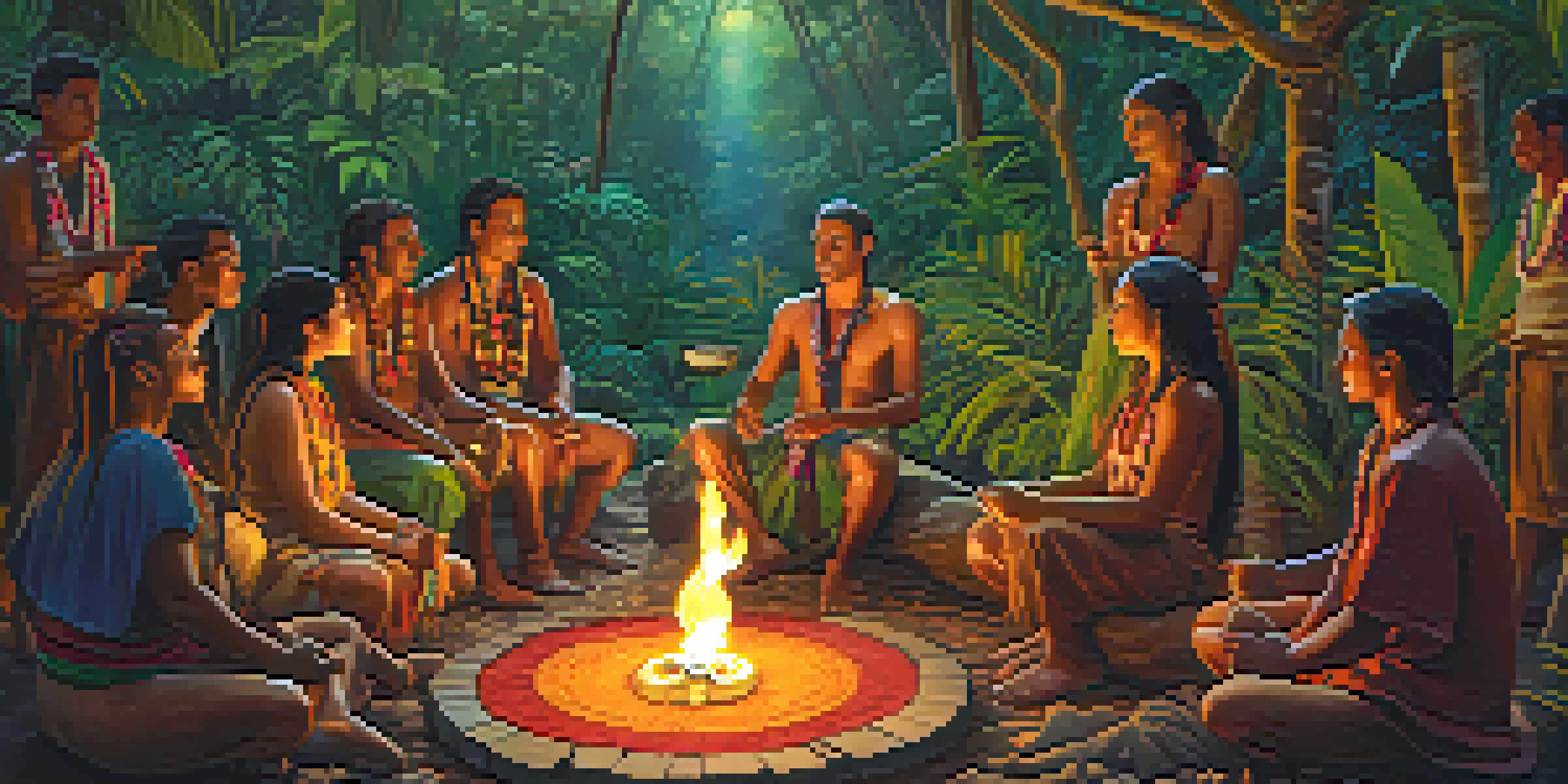Personal Journeys: Ayahuasca Experiences in Trauma Recovery

Understanding Trauma and Its Impact on Lives
Trauma can feel like a shadow that never fully leaves, affecting our mental and emotional well-being. Many people encounter trauma through various experiences, such as loss, abuse, or significant life changes. This lingering impact can manifest in anxiety, depression, or PTSD, making recovery seem daunting.
The wound is the place where the Light enters you.
The journey to healing from trauma is often complex, requiring more than just traditional methods. While therapy and medication can be helpful, some individuals find that exploring alternative paths offers deeper insights and relief. This is where practices like ayahuasca ceremonies come into play.
Ayahuasca, a traditional Amazonian brew, has gained popularity for its potential to facilitate profound emotional and psychological healing. Many individuals report transformative experiences that help them confront and process their trauma, leading to a renewed sense of self and purpose.
What Is Ayahuasca and How Does It Work?
Ayahuasca is made from the Banisteriopsis caapi vine and the Psychotria viridis leaf, which contains the psychoactive compound DMT. When consumed as part of a ceremonial setting, it can induce altered states of consciousness, allowing participants to explore their inner worlds. This unique experience often leads to introspection, emotional release, and heightened awareness.

The brew has been used for centuries by indigenous tribes in the Amazon for spiritual and healing purposes. Participants often describe the experience as a journey that reveals hidden truths and fosters a deep connection with themselves and their surroundings. These insights can be especially beneficial for those grappling with trauma.
Healing Trauma with Ayahuasca
Ayahuasca ceremonies can facilitate profound emotional healing for individuals grappling with trauma.
During an ayahuasca ceremony, participants are guided by an experienced shaman who helps create a safe and supportive environment. This setting is crucial, as it allows individuals to navigate their emotional landscapes with guidance and care, making the experience more effective.
Personal Stories of Healing Through Ayahuasca
Many individuals who have experienced trauma share powerful stories of healing through ayahuasca. For example, one woman spoke about overcoming years of childhood abuse, explaining how the experience allowed her to confront her pain and integrate it into her life story. This newfound understanding brought her a sense of peace and empowerment.
Healing takes time, and asking for help is a courageous step.
Another participant, a veteran struggling with PTSD, described how the ceremony helped him process his traumatic memories in a way that traditional therapies hadn't. He found himself revisiting the moments that haunted him, but instead of feeling overwhelmed, he was able to release the burdens and find closure.
These personal journeys highlight the transformative potential of ayahuasca, showcasing how it can provide a space for emotional healing. While everyone's experience is unique, the common thread is a profound sense of clarity and connection that many participants describe.
The Role of Integration After Ayahuasca Experiences
Integration is a crucial aspect of the ayahuasca experience, as it involves applying the insights gained during the ceremony to everyday life. Without this step, individuals might struggle to make sense of their experiences or fall back into old patterns. Integration often includes ongoing therapy, community support, and personal reflection.
For many, this phase can be just as challenging as the ceremony itself, requiring patience and commitment. Support groups and therapy sessions can help participants process their experiences, allowing them to better understand the lessons learned. Journaling and creative expression are also valuable tools in this phase.
Importance of Integration
Integration is essential for applying insights gained from ayahuasca experiences to everyday life.
By actively engaging in the integration process, individuals can cultivate lasting change and healing. This helps to solidify the benefits of their ayahuasca journey, making it a sustainable part of their recovery from trauma.
Potential Risks and Considerations of Ayahuasca
While ayahuasca can offer profound healing, it's essential to approach it with caution and awareness. Not everyone will have a positive experience, and for some, the process can be emotionally challenging or even traumatic. It's vital to consider one's mental health history and consult with professionals before participating.
Additionally, the setting in which ayahuasca is consumed plays a significant role in the experience. Attending a well-regarded ceremony with an experienced shaman can make a considerable difference. Conversely, a poorly conducted ceremony can lead to feelings of confusion or distress.
Lastly, it's important to remember that ayahuasca is not a cure-all. While it can provide valuable insights and facilitate healing, it should be viewed as part of a broader journey that includes therapy, support, and self-care.
The Growing Popularity of Ayahuasca Retreats
In recent years, ayahuasca retreats have surged in popularity, attracting individuals from all walks of life seeking healing and personal growth. Many retreats are held in beautiful natural settings, offering participants the chance to disconnect from their daily routines and immerse themselves in the experience. These environments can enhance the sense of safety and serenity during the ceremonies.
Participants often share their experiences online, creating a community of individuals who support one another in their healing journeys. This sense of camaraderie can be incredibly beneficial, as it allows people to feel less isolated in their struggles. It also helps to demystify the process and provide a clearer understanding of what to expect.
Cautions and Risks of Ayahuasca
While beneficial for many, ayahuasca carries risks and should be approached with caution and professional guidance.
However, with the increase in popularity, it's essential for seekers to choose retreats carefully. Researching the facilitators, reading reviews, and asking questions can help ensure a safe and meaningful experience, allowing individuals to focus on their healing without unnecessary stress.
Conclusion: Personal Growth Through Ayahuasca Healing
The personal journeys of individuals who have turned to ayahuasca for trauma recovery illustrate the brew's potential for profound healing. While each experience is unique, many find that ayahuasca offers them the tools to face their pain and emerge stronger. By fostering self-awareness and emotional clarity, it can pave the way for lasting change.
However, it's crucial to approach this path with mindfulness and respect, acknowledging both the benefits and risks involved. Integration and support are vital elements that can enhance the healing process, ensuring that the insights gained during ceremonies translate into meaningful life changes.

Ultimately, ayahuasca can serve as a powerful catalyst for personal growth, enabling individuals to rewrite their narratives and reclaim their lives. As more people share their stories, the conversation around trauma recovery and alternative healing continues to evolve, offering hope and inspiration to those on similar journeys.